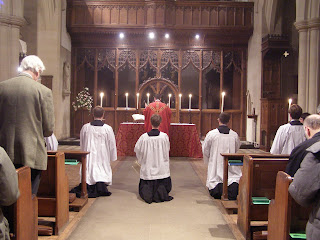
Fr Edward Dowler, Vice-Principal, looks at a reassessment of liturgical reforms in today's Church Times
- Worship as a Revelation: The past, present and future of Catholic liturgy by Laurence Paul Hemming (Burns & Oates £15.99) (978-0-86012-460-3)
- Worship as Believing: Faith and reason in search of a theology of eucharist by Aelred Arnesen (Trafford Publishing £14.75) (978-1-42512-145-7)
In his important and cogently argued book, Laurence Hemming, drawing on the work of Margaret Barker, argues that the roots of early Christian worship were primarily in the Temple in Jerusalem
Jerusalem Temple
Temple
In contrast, the simplicity, transparency, and predictability that were essential to the new rites reflect, he argues, an individualistic, rationalistic, Cartesian view of the human person, which is non-traditional and essentially non-Christian.
In contrast, the simplicity, transparency, and predictability that were essential to the new rites reflect, he argues, an individualistic, rationalistic, Cartesian view of the human person, which is non-traditional and essentially non-Christian.






